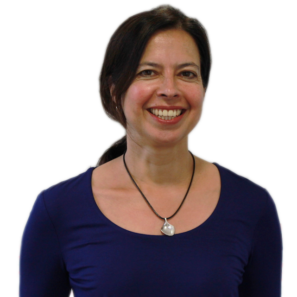Disability, equality and digital inclusion
Internet access is an essential, not a luxury. It isn’t ok that millions of disabled people are still digitally excluded. #DigitalLifeline shows we can change this, writes our Director of Evidence and Engagement, Dr. Emma Stone.
Last week, the 3rd UK Essential Digital Skills benchmark was published by Lloyds Banking Group. It spotlights the scale of digital and disabling barriers faced by many disabled people and people with learning disabilities:
- 32% of people with an impairment do not have even the most basic digital skills.
- Of the 11 million people who do not have the ‘Essential Digital Skill for Life’, more than half have an impairment.
- People with multiple impairments are at the greatest risk of digital exclusion.
The good news: around 3.7 million more people with an impairment have improved their capability in the last year. Initiatives like Digital Lifeline help make that happen.
Last year, government statistics revealed that 75% of people with a learning disability said their wellbeing had been affected by the impact of coronavirus, compared with 37% of non-disabled people (ONS 2020). In response, the Department of Digital, Culture, Media and Sport supported us to deliver the Digital Lifeline Fund in England.
Led by Good Things Foundation in partnership with AbilityNet, Learning Disability England, VODG (Voluntary Organisations Disability Group), Digital Unite and 146 other partner organisations – we did something incredible together.
In a few months, we successfully reached 5,500 people with learning disabilities – addressing the most common digital and disabling barriers, and enabling more people to be connected and learn digital skills. Together, we helped people achieve their goals. Even within a few weeks of receiving a device, nearly 7 in 10 said they felt more confident in general, 2 in 3 felt their digital skills had improved, and over half felt more connected and less lonely (see our Digital Lifeline Interim Report).
Delivering Digital Lifeline has been demanding – the time-frame was very tight, putting pressure on partners. Partners who were less experienced in supporting digital inclusion could tap into expertise and resources from Good Things Foundation, Digital Unite, and AbilityNet. The specialist accessibility support from AbilityNet was invaluable for people with multiple impairments, and for raising awareness about simple, free ways to adapt devices to individual needs.
Digital Lifeline shows the benefits and what we can achieve through cross-sector collaboration. But too many people with learning disabilities and disabled people are still excluded. The programme had requests for nearly 10,000 devices – indicating the scale of digital exclusion among people with learning disabilities in England. It also revealed gaps in digital access, skills and confidence among family members, carers, and the wider social care workforce.
That’s why our Blueprint to fix the digital divide calls for action in three priority areas:
- Digital Skills: So everyone can use the internet for life and work
- Community Support: So everyone has somewhere local to go for internet help
- Affordable Internet: So everyone has the everyday internet access they need.
Internet access is an essential, not a luxury. It isn’t ok that millions of disabled people are still digitally excluded. #DigitalLifeline shows we can change this.
For more about Digital Lifeline – impact and lessons learned – read our new report.
For more about how your organisation can help people build people’s digital skills and confidence, sign up to one of our free Zoom sessions taking place in Get Online Week (18-24 October).

